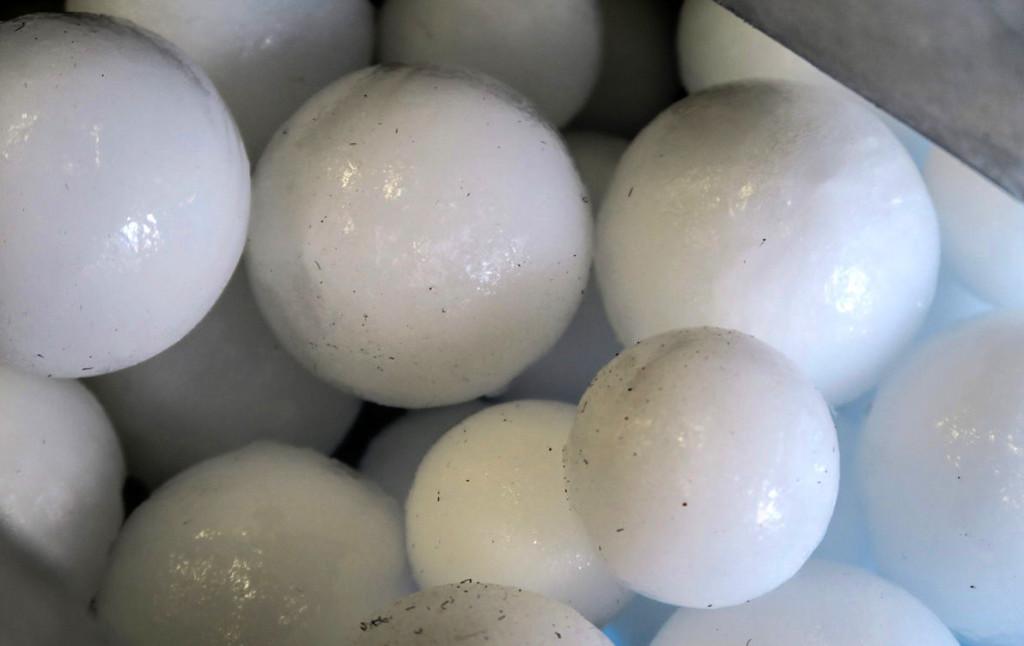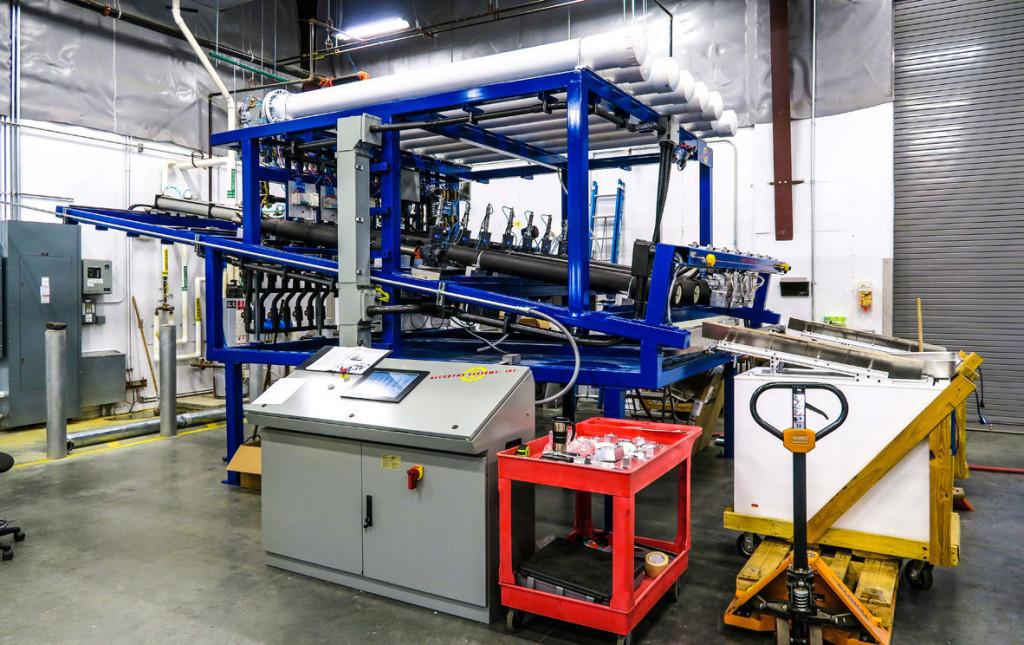As someone who was born—and is currently residing— in the Northeastern region of the United States, I can attest to the fact that hail storms are not fun to be stuck in. Hail, a solid form of participation composed of irregular lumps of ice, is usually generated within a thunderstorm that contains strong, upward motion of air and temperatures around freezing level. There are a few helpful methods, namely weather satellites and weather radar imagery, that assist in detecting possible hail-producing thunderstorms, but how do these falling frozen pellets actually form and affect us?
One researcher from the Richburg, South Carolina-based Insurance Institute for Business & Home Safety is using 3D printing technology to get his mind inside of the hailstone, attempting to gain a better understanding of this dangerous and relatively unpredictable natural phenomenon. Since 2012, Dr. Ian Giammanco and his wife, fellow scientist Tanya Brown-Giammanco, have been researching hail in great detail, looking into its characteristics, formation, the way it falls from the sky, and the destruction that is generally left behind after a hailstorm.
Using a 3D scanner and 3D printer, Dr. Giammanco and his wife have been aiming to 3D print multiple dimensions and measurements of hailstone, allowing them to evaluate the shape, weight, and the potential for size and mass change as the hail falls to Earth. Although most people are familiar with the general idea behind hail, very few actually understand the formation and impact of these wide-ranging frozen pellets. With their 3D printing system, Dr. Giammanco and his wife have been able to learn a great deal about the nature of hailstones, which they feel will eventually lead to improved computer modeling, better forecasting and remarkable advances in the near future.
“You can learn a lot just by looking. Hail research was done in the past but no one had really re-visited it recently,” Dr. Giammanco told Rapid City Journal. We now know that hailstones become less spherical as they get bigger, that there are a wide variety of shapes after they get above 1 inch in diameter, and that small stones are the strongest.”
In a matter minutes, Dr. Giammanco uses a handheld laser scanning system to scan, map, and create a digital model of a hailstone, which enables the research duo to 3D print a replica and study the aerodynamics of each particular hailstone. This unique 3D printing system (aka the hail-making machine) has a rapid freezing process that utilizes diffused carbon dioxide, which works to replicate the formation of layers within natural hail. This allows Dr. Giammanco to increase the sample size and validity of his study, enabling the production of 3D printed hailstones in whatever shape and type is necessitated by the research at hand.
This isn’t the first time 3D printing technology has been utilized to help us monitor certain patterns or types of weather on Earth. Last year, the USAID’s Office of US Foreign Disaster Assistance (USAID/OFDA) and the National Oceanic and Atmospheric Administration (NOAA) partnered up on a project to provide 3D printed weather stations to developing countries. In 2014, Life3D released a 3D printed camera capsule made to be housed within a weather balloon. What makes Dr. Giammanco’s research unique is that the focus is not on monitoring hailstorms; rather, they are using 3D printing technology to better understand the way of nature, and how we can prepare ourselves for whatever situation the atmosphere throws our way. What do you think of this type of research? Discuss in the 3D Printed Hail forum over at 3DPB.com.
[Source: Rapid City Journal]
Subscribe to Our Email Newsletter
Stay up-to-date on all the latest news from the 3D printing industry and receive information and offers from third party vendors.
You May Also Like
Gorilla Sports GE’s First 3D Printed Titanium Cast
How do you help a gorilla with a broken arm? Sounds like the start of a bad joke a zookeeper might tell, but it’s an actual dilemma recently faced by...
Nylon 3D Printed Parts Made More Functional with Coatings & Colors
Parts 3D printed from polyamide (PA, Nylon) 12 using powder bed fusion (PBF) are a mainstay in the additive manufacturing (AM) industry. While post-finishing processes have improved the porosity of...
$25M to Back Sintavia’s Largest Expansion of Metal 3D Printing Capacity Since 2019
Sintavia, the digital manufacturing company specializing in mission-critical parts for strategic sectors, announced a $25 million investment to increase its production capacity, the largest expansion to its operations since 2019....
Velo3D Initiates Public Offering in a Bid to Strengthen Financial Foundations and Drive Future Growth
Velo3D (NYSE: VLD) has been among a number of publicly traded 3D printing firms that have attempted to weather the current macroeconomic climate. After posting a challenging financial report for 2023,...


































